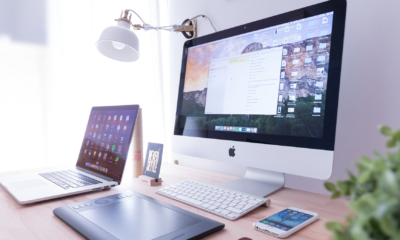Business
How office design can make a happy office
Most of us are aware of how environment affects health, both physical and mental. This is why we clean our homes to reduce stress and demand clean air for the sake of our health. Yet we often forget how the environment we work in affects everything from morale to our literal health. Let’s learn a few of the ways how office design can make the workforce happier, healthier and more effective.
Lighting
Lighting affects productivity directly and indirectly. People do better when they have a lot of natural light. Too little natural light is associated with lower morale and more sick days. Bright working lights can help, though glare can make it hard to read a computer screen. This is where you need to balance bright light from natural and artificial sources with the right type of light for the job. Task lighting can help, and there are times when you need blinds or light filtration to avoid problems from natural sources.
Noise Levels
Noise adversely impacts performance. Many people can’t think if they can hear every little noise that comes from their coworkers. They may not be able to work when they can hear people eating snacks or chatting. Their performance certainly suffers if they can’t talk on the phone with clients because of the noise from other’s conversations.
Privacy
Privacy impacts performance in a variety of ways. If you feel like you’re being scrutinized, you tend to make more mistakes, not fewer. It is similar to someone being more likely to freeze up or make a mistake when standing on stage than when they are alone or in a group of friends.
Privacy is not just a personal concern. Small breakout spaces give teams more emotional space to work than standing in a hallway or meeting room in front of 20 people, since they can throw out wild ideas or give constructive feedback without having everyone else hear it. This is perfect for mentoring and regular feedback sessions for new hires, as well, since their teammates aren’t able to overhear the discussion.
Public Spaces
Too many managers think that the office should be dedicated entirely to cubicles and meeting rooms. They act as if break rooms and other public spaces interfere with productivity, when it can actually be the opposite. Break areas encourage socialization among the team much more effectively than organized team building exercises at retreats. Small conversational groupings of chairs and couches serve as informal meeting areas. Your team might meet for ten minutes to solve an issue as soon as it arises in such a space. Issues are resolved sooner, and they don’t need to book a meeting space to do it. Nor do they have to set up a formal meeting, either. Public spaces like these are good for presenting slides to a customer and having impromptu product reviews. You might get more honest feedback from a client than when you’re in a meeting room with ten stakeholders and their bosses.
Space
Office space doesn’t have to come at a premium. Leaders like Halkin balance efficiency with amenities, so that everyone can have a desk to work at while having access to luxurious break rooms and large breakout spaces. Visit their blog to find out more ways to improve your office space, for the benefit of your company and your staff.












